International Journal of Computer Technology and Electronics Engineering (IJCTEE)
Volume 2, Issue 1
ISSN 2249-6343
ARM9 Based Embedded E-Documentation
Sachin S. Taware, Sanjay G. Galande, Sachin D. Anap, Amruta M. Kulkarni, Mahesh
D. Nirmal, T.A.More
Abstract— Among the huge population of India many
people facing the headache of the government documents.
Unwillingly they have to pay extra money and extra time for
these documents though it is our basic right to get it free and
urgent! This project is proposed to achieve the main goals of
anti-corruption system for government documents needed for
common people in day to day life. Our project basically
includes four main parts, a fingerprint detector, ARM-9
control unit, PC with touch screen GUI and internet database
station. The database (name, address, unique ID and
Fingerprint etc.) and respective records (7-12 records, proof
of residency etc.) of each citizen of country is recorded and
stored in the database station. Using finger print identity,
unique code and token amount (exceptional) user can easily
get document either in visual or in printed format. Our
Embedded E-documentation system is implementable for
“Talhati office” at village/city level which is the ground hub
of government work. By connecting all such systems over a
country on a dedicated secure network with single Database
station, we can easily achieve the remote access anywhere in
Country. The fascinating features of this project such as
quick and reliable operation, database handling and ATM
like use will force this design to be spread over the country
soon.
Index Terms—ARM9, ATM, E-Documentation, GUI,
UID,
I. INTRODUCTION
In
like India,
the developing nation
the
corruption is main economy problem. We can see the bribe
taking corrupted officers and many government & private
administrative peoples. The legal documents in day to day
life are purposefully delayed by such people even though
to get these documents on time is our basic right. Then our
mind start to think somewhere that why should we pay for
our right? What happen if all these system become an
electronic & automated?
A. Brief History
is
The ATM machine is the most used equipment in
public domain which
invented for easy money
transaction and amount detailing at user side and banking
section well. The
first electronics
documentation for public domain is implemented in the
decade 1970 in US for telephone and banking sectors.
Further it is carried by most of the European countries for
public domain.
Idea of very
The breeze of this technology is flown in eastern
in 1990s. China, Japan and India
countries
consequently are the countries adapted fast for these
technologies. [1] Now we can see the miracle of the same!
late
B. Recent trends & developments in E-documentation
The US, UK, Russia and many others western
countries are keeping the electronic record of citizens for
their security and smooth central documentation. The
United States with the help of such records implements
various public development policies. Also the agriculture,
government documentation,
tragedy
control, security, domestic facility and population control
etc. are traced by these records.[6] The main advantage of
such documentation is taken by their citizens for smooth
government related issues. Also their government reaches
to public through the advertisements on various public
machines like ATM, LED advertisement display at railway
stations and airports, building based hoardings etc.[3] All
these things are origin of our project idea.
traffic control,
II. THEORETICAL DETAILS AND ANALYSIS
A. Theoretical Review of E-Documentation
The frustration of bribe for government documents
force to think us about some automated system. The idea of
our project is output of all such frustrations and media
awarance. Here we are going to implement a project in
which the system is able to detect the unique finger print of
a person who is in need of such documents and accordingly
it will immediately provides the necessary documents in
printed format without any payment to respective officer.
This can be implemented in “Talhati office” from where
we need to take many important documents like 7/12
details, agricultural area proof, proof of residence etc.
These utilize fingerprint recognition technology to allow
access only to those whose fingerprints are stored in
database. It contains all the necessary electronics to allow
you to store, delete, and verify fingerprints with just the
touch of a button. Stored fingerprints are retained even in
the event of complete power failure or battery drain. These
eliminates the need for keeping track of keys or
remembering a combination password, or PIN. It can only
be opened when an authorized user is present, since there
are no keys or key combinations to be copied or stolen, or
locks that can be picked.
158
�
International Journal of Computer Technology and Electronics Engineering (IJCTEE)
Volume 2, Issue 1
ISSN 2249-6343
In this project the fingerprint module will be used. It
can store number of finger prints on its own memory at a
time. It can be controlled through its serial port.
The microcontroller ARM9 interacts with the
module. You can add a fingerprint, Delete a fingerprint and
identify the fingerprint. To add a fingerprint, just show the
finger on the module and press the ADD key. Now the
microcontroller will send the ADD command to the
module and the module will add it into the memory. To
delete the finger follow the same as above. To identify the
finger, press the Identify button and if the finger matches
then the Relay is complemented. Also the fingerprint ID is
displayed over the LCD display.
B. Analytical review of E-Documentation
When the code assigned to particular matched
fingerprint is given to the PC via serial communication; the
PC software made in VB/oracle will automatically open
the personal account of detected person. The low cost
touch screen is available on monitor screen, by selecting
the particular option related to whatever document we need
it will display on the screen. If we want to print this
document then print command will also be available for
each account. In short our system is fully automated
anticorruption embedded documentation system using
finger print identification. Since media is the main weapon
of public awarance, the helpful features of networking to
display advertisements and schemes from government side
definitely fascinate our social system to think of its
implementation.
Fig.1: Block diagram of E-documentation system.
159
C. Possibility of Implementation
Our society is now well aware of ATM banking. The
key features of project like smartcard and biometric person
identification make this system possible to implement even
at remote level. The similar procedure like ATM banking
is included in the E-documentation system which will
allow user to produce the confidential documents related to
his/her record in hard or soft format. Also the highest
security provided by biometric and unique ID will serve
the purpose to avoid the misuse of such important
documents. Block Diagram and Description
D. Block diagram description
The E-documentation system consist of four
modules, each of these is function dependant and
interconnected to each other to form a complete system.
Each module has its own significance thus need to be work
synchronously with another one. The system is divided into
following parts.
1) User Identification module
2) ARM-9 Control module.
3) GUI and Printing module.
4) Networking module.
that E-documentation
Each of the above consists of one or more than one
electronic subpart that will be discussed in detail later in
this section. Before starting with detail description we
should understand
is public
application of ATM subsystems and it is not an ATM
machine. The far advance and smarter use of biometrics
and UID concepts make it a fabulous user friendly system.
The key advance feature of automated working increases
its applicability and intensive use at user end. Let we
discuss each module of E-documentation system in detail.
E. User Identification module
The User Identification module (UIM) is the basic
man machine interface which is used to trace the identity of
the user and provides a secure access to important
government documents. Since each person who needs
documents should not conflict with identity of another
person each of them needs unique identity. The identity of
the person in our system is decided using two basic
signatures, one is figure print and another is unique
identification number provided to each person.
F. Biometric Identification using Finger print module
The figure print detection module is the basic
important module for user identification which generates
the binary data by scanning the finger print loops.
Fingerprint of any two persons cannot be same at anytime,
anywhere and anyhow! Thus the unique biometric identity
of a person differentiates it from other humans. The
biometric fingerprint system scans and stores large amount
of fingerprints by assigning them a unique ID number. Also
the data related to each finger can be serially accessed to
processor for further operation.[5]
�
International Journal of Computer Technology and Electronics Engineering (IJCTEE)
Volume 2, Issue 1
ISSN 2249-6343
G. Unique Identification (UID) using smartcard
The UID is the number assigned to each of the user
which is non-transferable and unique.[6] The 16-digit UID
consist of a smart chip. Multi-factor and proximity
authentication can and has been embedded into smart cards
to increase the security of all services on the card. For
example, a smart card can be programmed to only allow a
contactless transaction if it is also within range of another
device like a uniquely paired mobile phone. This can
significantly increase the security of the smart card.
Governments gain a significant enhancement to the
provision of publicly funded services through the increased
security offered by smart cards.
These savings are passed onto society through a
reduction in the necessary funding or enhanced public
services.
that
is critical
information
Individuals gain increased security and convenience
when using smart cards designed for interoperability
between services. For example, consumers only need to
replace one card if their wallet is lost or stolen.
Additionally, the data storage available on a card could
contain medical
in an
emergency should the card holder allow access to this.
Today’s smart card with ferroelectric memory and advance
recording technique can store data up to 256KB. In our
system 16 digit data is stored. The distribution of all 16
digits will be as follows.
1) 1-digit: security bit.
2) 5-digit: User code.
3) 2-digit: Village/city code.
4) 2-digit: Taluka code.
5) 2-digit: District code.
6) 2-digit: State code.
7) 2-digit: Country code.
Using this ID any user can be identified easily if this
16-digit code is matched with fingerprint data-code.
H. ARM-9 control module
In our system ARM control module plays a vital role
since it is the heart of all data processing structure. Here,
we use ARM9 centrally to compare the fingerprint data and
code assigned to it with data code coming serially/parallel
from smart card sub-module. If the match is found, the user
is authenticated and will be allowed for further access of
E-documentation system.
an ARM
ARM-9 is
architecture 32-bit R
ISC CPU family. With this design generation, ARM
moved from a von Neumann architecture (Princeton
architecture)
to a Harvard architecture with separate
instruction and data buses (and caches), significantly
increasing
its potential speed. Most silicon chips
integrating these cores will package them as modified
Harvard architecture chips, combining the two address
buses on the other side of separated CPU caches and
tightly coupled memories.
160
solutions
The ARM9™ processor family enables single
for microcontroller, DSP and
processor
Java applications, offering savings in chip area and
complexity, power consumption, and time-to-market. The
ARM9 DSP-enhanced processors are well
for
applications requiring a mix of DSP and microcontroller
performance.
suited
H. GUI and Printing module
After confirmation of authentication of user the data
access simply by touch to the panel with glass window is
provided
is
displayed on the touch screen module which is connected
to PC. Touch panel provides the mouse click access to the
user without delay.[4]
in E-documentation system. The GUI
I. Networking module
The fingerprint and UID signature is compare online
with the server database and if match is found then the
access bit becomes active. The option window will be pop
up which will show various options to the user as
mentioned above. The documentation may either in soft
format or there will be certain option to get these into hard
copy format. The scanned copies of all these documents
with necessary signature of authorized officer are
previously uploaded onto the account of the respective
user. Networking module consists of client PC connected
with server at village level, Taluka level, district level,
state level and finally at country level by internet line for
government purpose which is dedicated, high security
leased line passing through large number of encryption
standards. Such a high level networking is used for
E-documentation system. Also an extra backup server is
provided to back up all the data during failure of any of the
server. Our system works more likely an email account, i.e.
if authentication is found the user account gets open and
various options for which we already stored database and
attachments pop ups. Using touch panel user can select
necessary document, it first displayed into visual format
and then print online option provided to that particular data
may use to get data into hard copy format for free. Also at
the corner or bottom or by using separate option, various
government policies can be shown to user as an
advertisement. This type of networking is possible using
simple HTML protocol.
III. SOFTWARE ARCHITECTURE AND ALGORITHMS
A. Control Flow Diagram
The large class of application having following
characteristics requires control flow modeling. The
application those are driven by events rather than data. The
application those produce control information rather than
reports or display. The application those processes
information in specific times.
�
International Journal of Computer Technology and Electronics Engineering (IJCTEE)
Volume 2, Issue 1
C. Working of System
ISSN 2249-6343
in day
to day life
India is a developing nation, but the corruption is main
problem in front of us. We can see the bribe taking
corrupted officers and many government & private
administrative peoples in day to day life. Even the legal
documentation needed
is also
purposefully delayed by such people even though to get
these documents on time is our basic right. Then our mind
tries to think that why should we pay for our right? If all
these system become an electronic & automated then what
happen? Here we are going to implement a project in
which the system is able to detect the finger print and
unique ID of a person and accordingly it will immediately
provide the necessary documents in printed form without
any payment to respective officer.
This can be implemented in “Government office”
from where we need to take many important documents
like Cast Certificate, Nationality, Income Certificate, 7/12
details, Agricultural area proof, Proof of Residence etc.
1) We have to collect all information about each parson
with its Fingerprints stored into a database then this
system is to be displayed in the public where anyone
can easily access the system.
2) When a user have desire to take his nationality
certificate then he just had to touch his thumb on
thumb Detector. If you are authorized then user enters
in system and shows his Certificate titles. If user
unauthorized then user not enter in database.
3) In this project the fingerprint module from Physical
Biometrics is used. It can store up to 200 finger prints
on its own memory.
4) You can Add fingerprint, Delete fingerprint and
Search operation can performed on it. To add a
fingerprint, just touch the finger on the module and
press the ADD key. Now the microcontroller will send
the ADD command know this finger add into
Database. To delete the finger then go to Database and
remove the fingerprint same as search. This authority
provide by only Administrator not user.
1) These utilize fingerprint recognition technology to
allow access to only those whose fingerprints you
choose or only authorized user. It can only be opened
when an authorized user is present, since there are no
keys or combinations to be copied or stolen, or locks
that can be picked.
2) The code assigned to particular matched fingerprint is
given to the Database. the software made in java will
automatically open the personal account of detected
person.
3) The low cost touch screen is available on monitor
screen, by selecting the particular option related to
whatever document we need it will display on the
screen.
4) This project will help for better communication
between government schemes and people.
5) Show Government scheme’s available for that user.
6) If we want to print this document then print and cancel
command will be available for each account.
Fig.2: Control Flow Diagram for SPI&TOPS system
B. Sequence of process flow
Sequence charts for scenarios help to identify the
different participants in the action & their interaction as
well as show sequence of events. it shows the sequential
representation of the system work. Sequence diagram
emphasize visualizing the allocation of responsibility. It is
easy to shift task sideways. It shows the Dynamic view of
system.
Fig.3: Sequence diagram for overview of SPI&TOPS
161
�
International Journal of Computer Technology and Electronics Engineering (IJCTEE)
ISSN 2249-6343
Volume 2, Issue 1
D. Front end and Back end design
A. Front End
On the front end side Java software is used. It
provides the tabular information. This helps in providing
the Government office in a sophisticated fashion. The Java
code are embedded in a single page. Before the actual
coding, all the required name space and libraries required
for the code are called in using an import statement.
IV. ADVANTAGES AND FUTURE SCOPE
A. Advantages of the E-documentation System
1) All data records are keeping digitally and Provide
certificate in Digital format.
2) This project will help for better communication
between government schemes and people.
3) Somehow corruption will be controlled.
4) Time will be saved for long Government
procedures.
5) Nations safety will be increased due to unique ID.
6) Thumb impression will provide more safety to each
account.
7) Documentation is easier than existing system.
8) Reduce Human resources and Save time.
9) Record keeping is much easier than existing system.
10) Data is easily accessible for the users.
B. Challenges in front of E-documentation system
1) Collection of data and its storage across the
country.
2) Database management and security.
3) High speed dedicated networking.
4) Awarance about E-documentation
C. Future scope
like, birth certificate, online
E-documentation system can be an advance system
which may implemented for the detail documentation of
the citizens
results,
college/school registration, and university registration,
medical database storage, criminal report storage, cast
certificates etc. Also, agriculture related government
schemes can be easily be reached to the farmers
Fig.4: Sample option form format design
V. CONCLUSION
B. Back End
Microsoft Access is used as the back end where the
tables are created on the database. There are two tables,
one for registered user table and information table. The
structure of the field and data type is provided in the table
design. An authenticated access is provided to the
database. All the information given when a new user signs
up is captured in this database. Whenever the user logs in,
the credentials are authenticated with the server and ensure
further progress to the other pages. Users are managed
using the enterprise manager in Microsoft Access.
162
The government documents are most important and
frequently used things in day to day life. Hence a large
number of users needs authorized certificates so that they
can access certificate digitally and can easily get hard copy
of certificate. The existing electronics storage systems are
complicated and not reliable to handle such huge amount
of data. Managing all this stuff and saving all the data is
very difficult task. So we are going to develop an
e-documentation
government
documentation.[2]Which will provide the easy and fast
access to government documents with higher security by
biometric and UID authentication. This project will
definitely help to reduce the corruption in government
offices. Also, this will be the best interface between
government policies and public.
system
for
�
International Journal of Computer Technology and Electronics Engineering (IJCTEE)
Volume 2, Issue 1
ISSN 2249-6343
E-documentation is easier than existing system and
reduced human resources as well as time and money saving
will make it most fascinating system soon.
REFERENCES
[1] “E-Governance Strategy in India” White Paper, by Sameer
Sachdeva, Dec 2002, pages 1 to 35. “E-Governance and Best
Practices”, Survey paper by government of India, Annex
6.3.1,year 2008 helps to understand the concept and regional
limitations on E-governance in India.
[2] “E-Governance in India: Dream or reality?” By Mrinalini
Shah, International Journal of Education and Development
using Information and Communication Technology
(IJEDICT), 2007, Vol. 3, Issue 2, pp. 125-137.
[3] “ATM terminal design is based on fingerprint recognition”, By
Yun Yang & JiaMi, 2010 2nd International IEEE Conference
on Computer Engineering and Technology, paper code
978-1-4244-6349-7.
[4] Raza, V. Hugue, “Application of Touch Screen technology”,
IEEE Trans. Technology, February 1999.
[5] B. J. Shin et al., “Design of Thumb Detector, IDEC Conf. 2002.
[6] “Promoting E-Governance”, Government Of India, Second
Administrative Reforms Commission, Eleventh Report,
December 2008.
Prof. Taware Sachin S. working as a lecturer in dept.of
E&TC at Pravara Rural Engineering College, Loni does his
PG in Embedded and VLSI and working on the research
entitled Embedded E-documentation
and Magnetic
Resonance Cavity.
Prof. Galande Sanjay G. working as a Asst. Professor &
PG coordinator in dept.of E&TC at Pravara Rural
Engineering College, Loni does his PG in Power Electronics
and working on
research entitled Embedded
E-documentation.
the
Prof. Anap Sachin D. . working as a lecturer in dept.of
E&TC at Pravara Rural Engineering College, Loni does his
PG in Embedded and VLSI and working on the research
entitled Embedded E-documentation.
Prof. Kulkarni Amruta M. working as a lecturer in
dept.of E&TC at Sir Vishveswaraiya Institute of Technology,
Chincholi (Nasik) doing his PG in Embedded and VLSI and
working
entitled Embedded
E-documentation.
research
the
on
Prof. M. D. Nirmal, Department of Computer Engg.
PREC Loni
6Tukaram A. More working as a Snr. Lecturer in dept.of
E&TC at Pravara Rural Engineering College, Loni does his
PG in Digital Electronics.
163
�
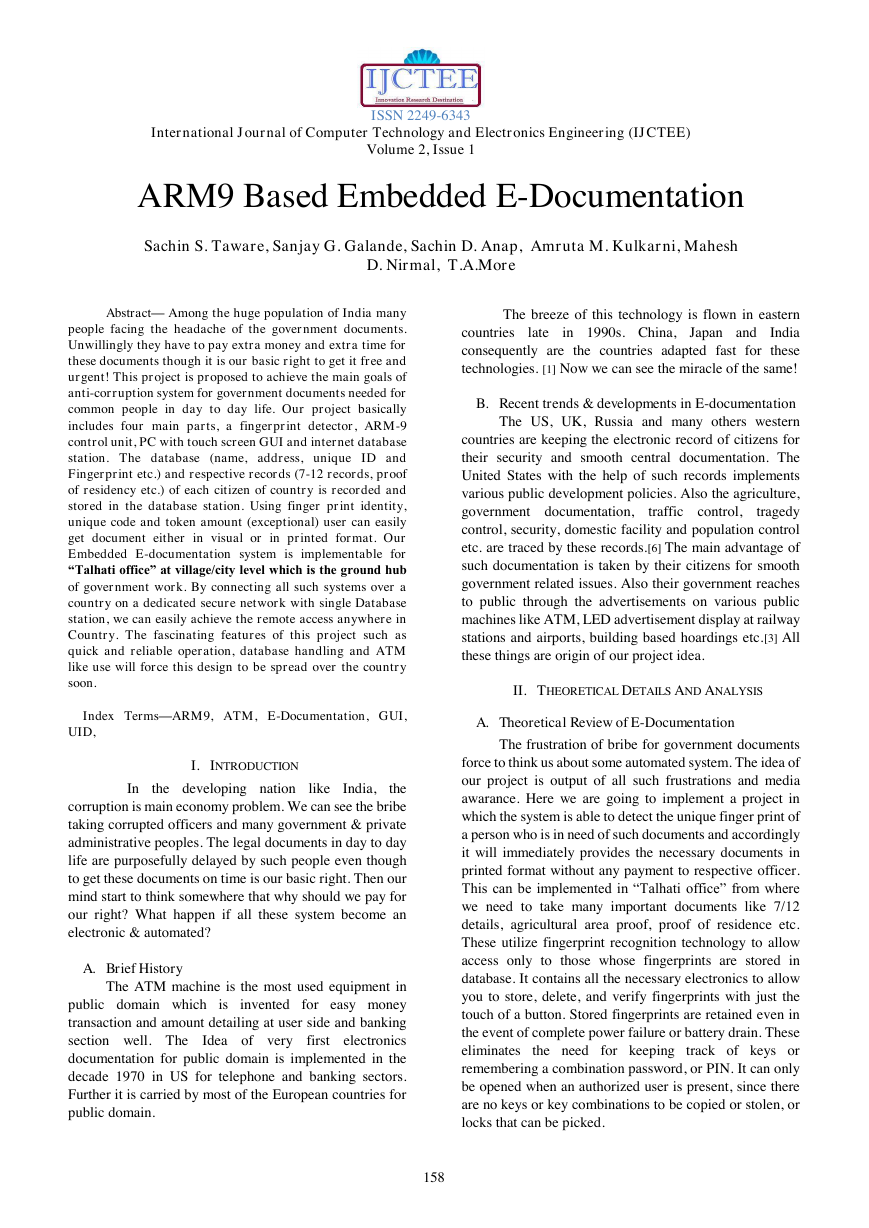
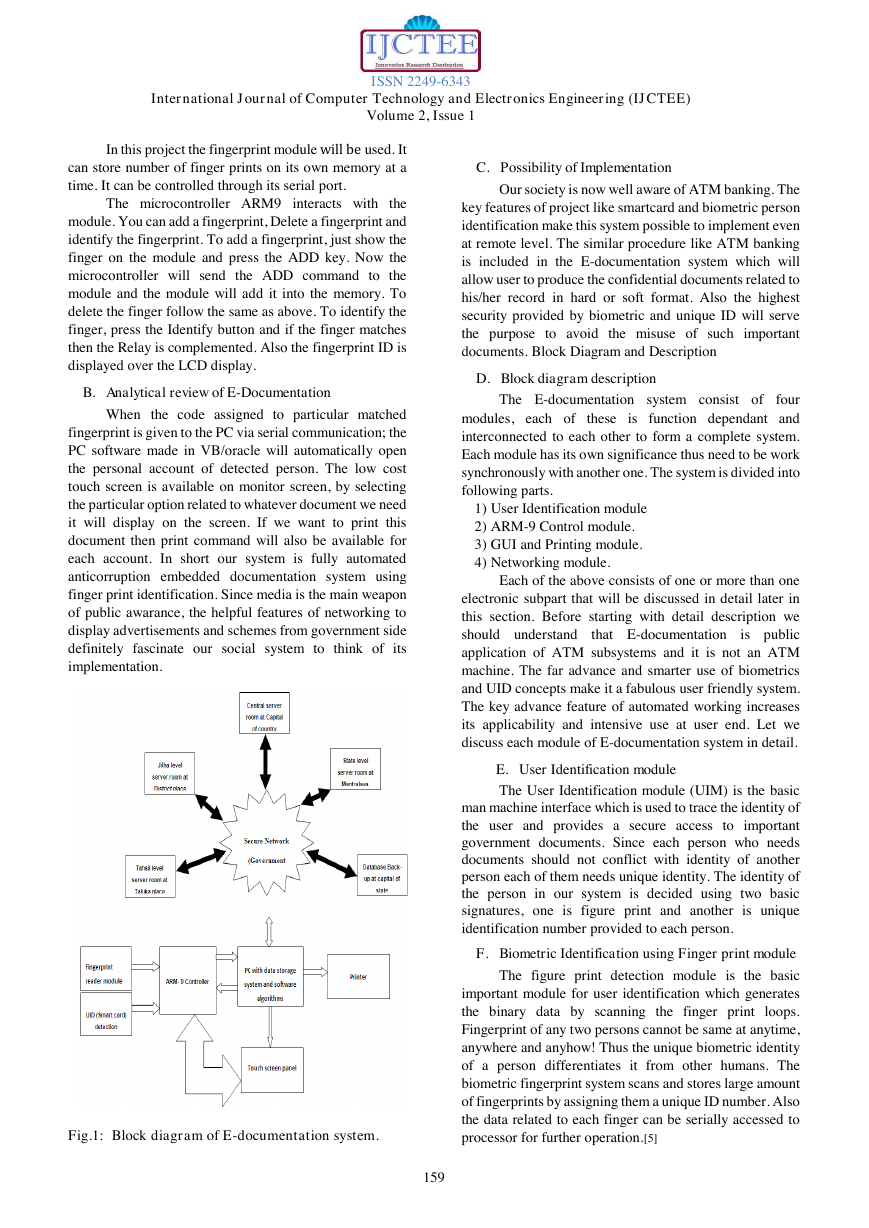
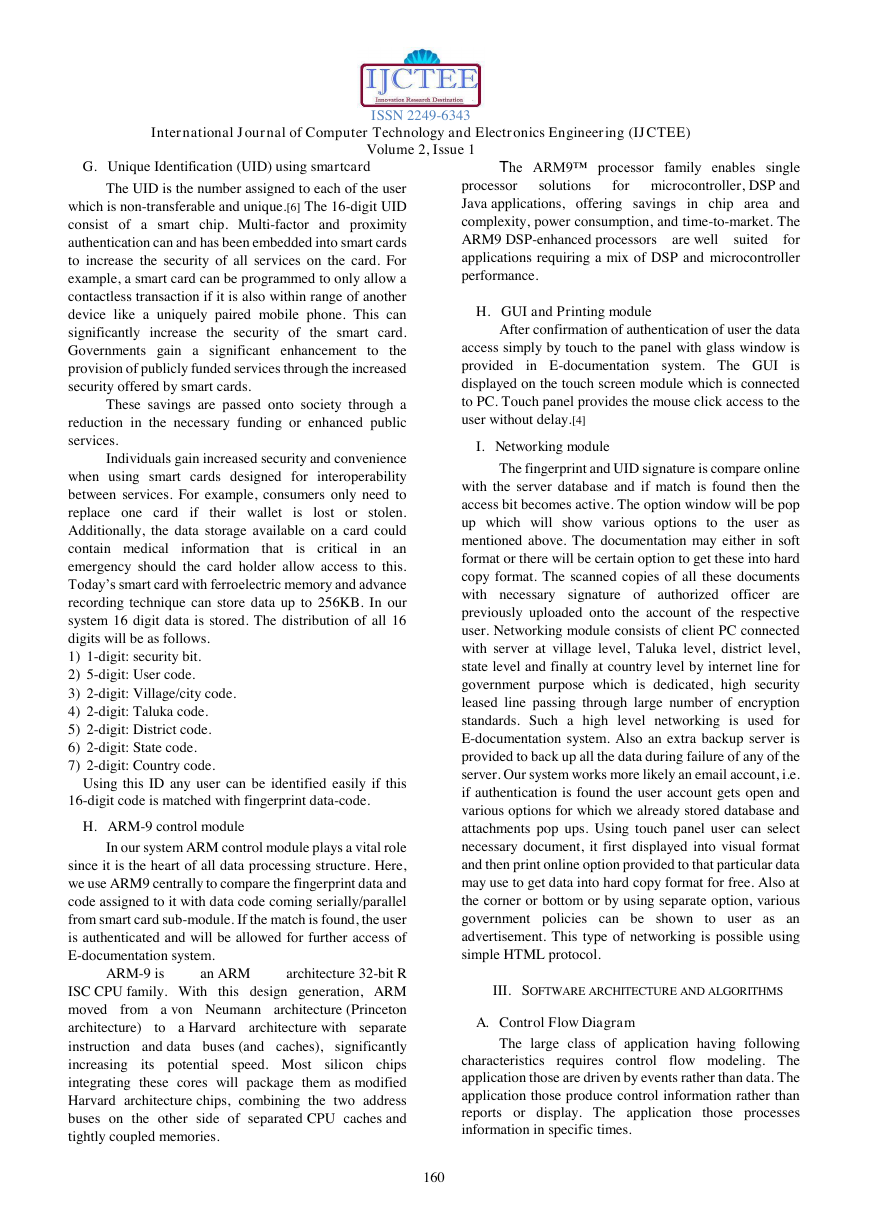
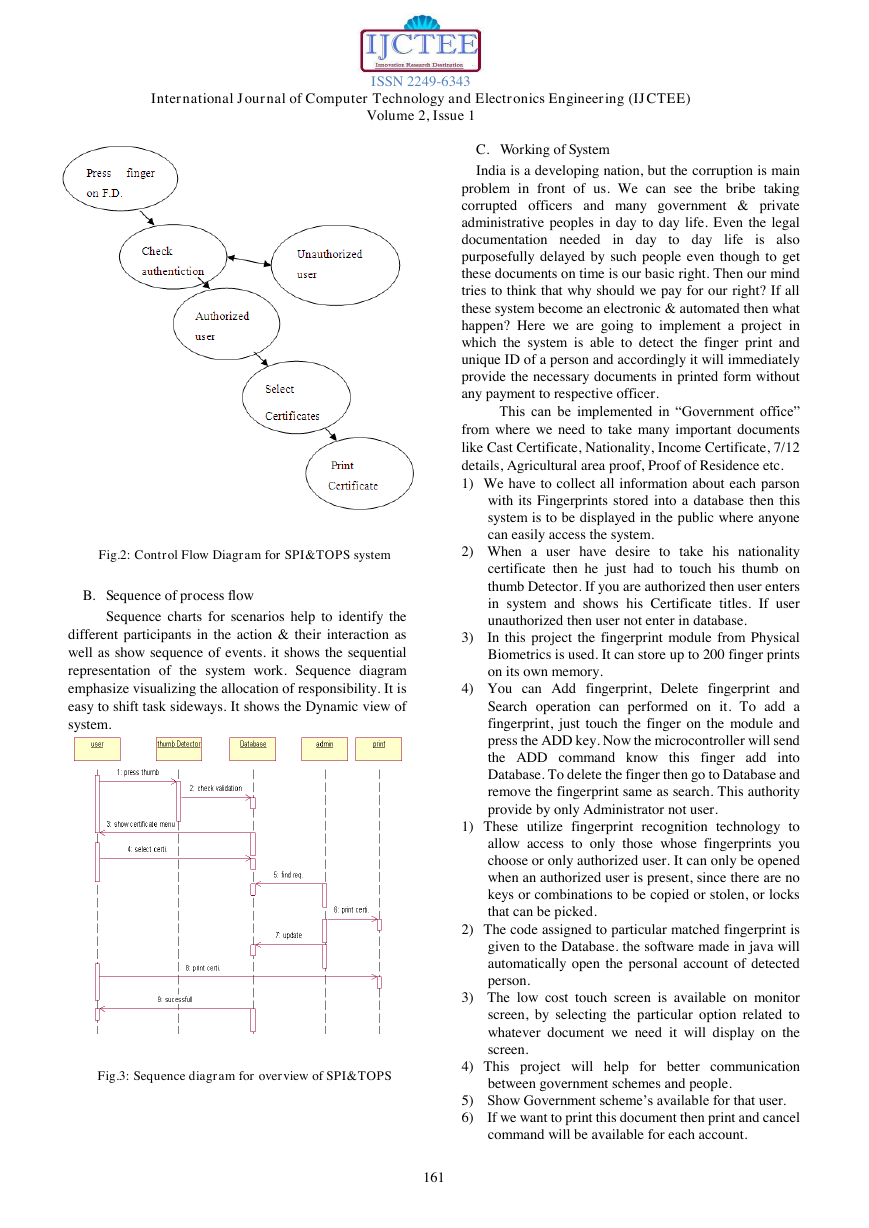

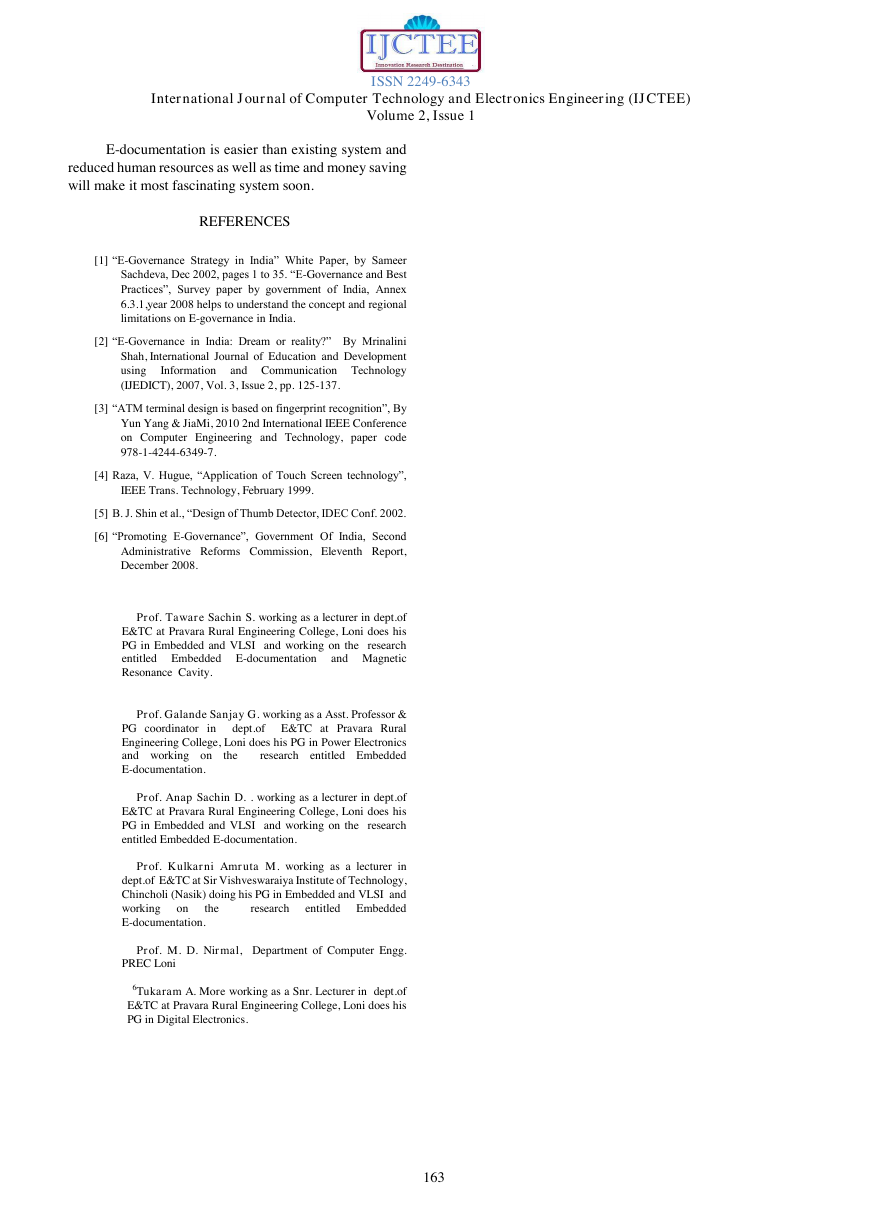






 2023年江西萍乡中考道德与法治真题及答案.doc
2023年江西萍乡中考道德与法治真题及答案.doc 2012年重庆南川中考生物真题及答案.doc
2012年重庆南川中考生物真题及答案.doc 2013年江西师范大学地理学综合及文艺理论基础考研真题.doc
2013年江西师范大学地理学综合及文艺理论基础考研真题.doc 2020年四川甘孜小升初语文真题及答案I卷.doc
2020年四川甘孜小升初语文真题及答案I卷.doc 2020年注册岩土工程师专业基础考试真题及答案.doc
2020年注册岩土工程师专业基础考试真题及答案.doc 2023-2024学年福建省厦门市九年级上学期数学月考试题及答案.doc
2023-2024学年福建省厦门市九年级上学期数学月考试题及答案.doc 2021-2022学年辽宁省沈阳市大东区九年级上学期语文期末试题及答案.doc
2021-2022学年辽宁省沈阳市大东区九年级上学期语文期末试题及答案.doc 2022-2023学年北京东城区初三第一学期物理期末试卷及答案.doc
2022-2023学年北京东城区初三第一学期物理期末试卷及答案.doc 2018上半年江西教师资格初中地理学科知识与教学能力真题及答案.doc
2018上半年江西教师资格初中地理学科知识与教学能力真题及答案.doc 2012年河北国家公务员申论考试真题及答案-省级.doc
2012年河北国家公务员申论考试真题及答案-省级.doc 2020-2021学年江苏省扬州市江都区邵樊片九年级上学期数学第一次质量检测试题及答案.doc
2020-2021学年江苏省扬州市江都区邵樊片九年级上学期数学第一次质量检测试题及答案.doc 2022下半年黑龙江教师资格证中学综合素质真题及答案.doc
2022下半年黑龙江教师资格证中学综合素质真题及答案.doc